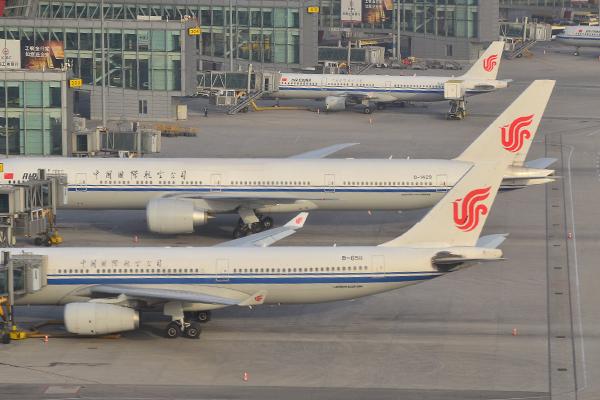
Air China and Sichuan Airlines have been given the green light to begin a new international route apiece.
The Civil Aviation Administration of China’s (CAAC) latest round of route approvals includes Air China’s plans for a Beijing Capital (PEK)-Chengdu (CTU)-Johannesburg (JNB) service. Flights would be 2X-weekly.
CTU-JNB is unserved nonstop and would become the Chinese city’s sole direct service to South Africa should the Star Alliance member launch the route.
Air China already serves JNB from Beijing, but with a stop in Shenzhen (SZX) rather than CTU. OAG Schedules Analyser data shows the carrier is currently flying the PEK-SZX-JNB route 1X-weekly using Boeing 777-300 aircraft.
However, the service is set to be suspended for two weeks from Jan. 18 after five passengers on flight CA868 tested positive for COVID-19 on Dec. 31. Under CAAC rules, any flight carrying five or more passengers testing positive upon arrival in China will have their route suspended for 14 days.
The government body has also suspended Pakistan International Airlines’ Islamabad (ISB)-Xi'an (XIY) route for four weeks after 10 passengers tested positive for the coronavirus on flight PK854 on Jan. 2.
Meanwhile, Chengdu-based Sichuan Airlines has been given the go-ahead to start service between Chongqing in south-west China and Cairo. The 7,102-km (4413-mi.) Chongqing Jiangbei International (CKG)-Cairo International (CAI) route has been approved to operate 1X-weekly.
Sichuan Airlines currently flies to CAI 1X-weekly with a PEK-CTU-CAI routing using Airbus A330-200 equipment. The carrier began CAI flights in October 2018, initially serving CTU-CAI nonstop before adding the PEK leg.
Earlier this week, CAAC revealed that China ended 2020 with 420 million passenger movements, making it the second-largest aviation market for the 15th consecutive year. The administration is forecasting passenger volume in 2021 will reach 590 million, or 90% of 2019 levels, mainly thanks to its strong domestic market.
In 2021, China wants to build six new airports, bringing its total number of commercial airports up to 247.
Photo credit: Nigel Howarth / Aviation Week
